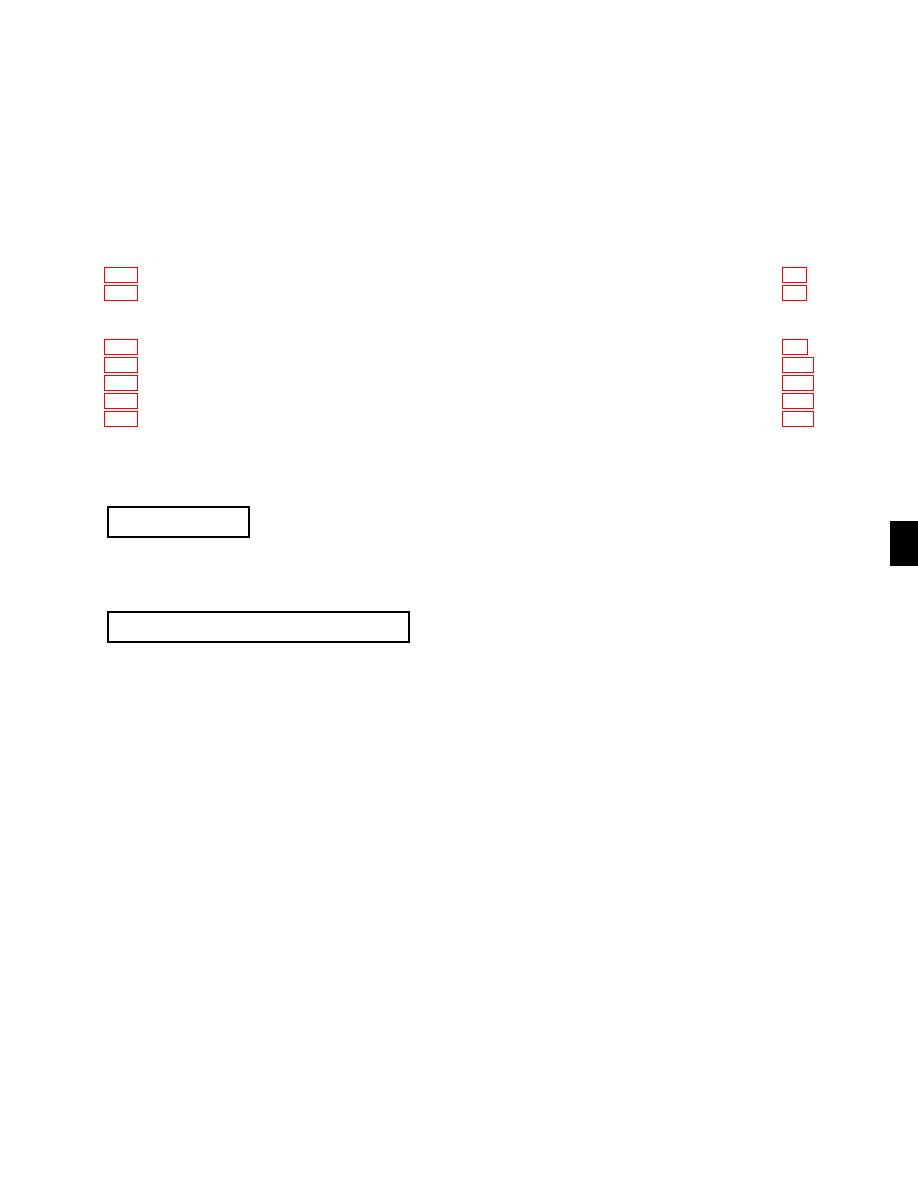 |
|||
|
|
|||
|
Page Title:
Chapter 6. ELECTRICAL SYSTEM MAINTENANCE |
|
||
| ||||||||||
|
|
 TM 10-3930-673-34
6
ELECTRICAL SYSTEM MAINTENANCE
Para
Contents
Page
Section I. Description and Data
General . . . . . . . . . . . . . . . . . . . . . . . . . . . . . . . . . . . . . . . . . . . . . . . . . . . . . . . . . . . . . . . . . . 6-1
Principles of Operation . . . . . . . . . . . . . . . . . . . . . . . . . . . . . . . . . . . . . . . . . . . . . . . . . . . . . . 6-1
Section II. Electrical System Maintenance Procedures
Alternator Repair/Test . . . . . . . . . . . . . . . . . . . . . . . . . . . . . . . . . . . . . . . . . . . . . . . . . . . . . .
Starter Repair . . . . . . . . . . . . . . . . . . . . . . . . . . . . . . . . . . . . . . . . . . . . . . . . . . . . . . . . . . . . .
Cab Wiring Harness Replacement/Repair . . . . . . . . . . . . . . . . . . . . . . . . . . . . . . . . . . . . . . .
Main Wiring Harness Replacement . . . . . . . . . . . . . . . . . . . . . . . . . . . . . . . . . . . . . . . . . . . .
Electric Joystick Assembly Repair/Test/Adjustment . . . . . . . . . . . . . . . . . . . . . . . . . . . . . .
Section I.
DESCRIPTION AND DATA
This chapter covers maintenance procedures for the electrical system components, as well as principles of
operation.
6-2. PRINCIPLES OF OPERATION
a. Charging System. The charging system includes the alternator, rectifier and voltage regulator. The
rectifier and voltage regulator are integral with the alternator. The basic function of the charging system is to
maintain the vehicle battery voltage (charge) at the specified level.
The alternator is an AC generator that is belt-driven by the engine crankshaft pulley. The AC produced in the
alternator stator windings is converted to DC by action of a diode rectifier bridge. The initial output from the
alternator is made possible by residual magnetism in the rotor poles. As the rotor turns, the magnetic lines of
force produced by the residual magnetism cut through the stator windings and current flow is produced by
the stator windings. As engine speed increases, alternator rotor speed also increases. Current flow produced
by the stator increases accordingly.
A portion of the current produced in the stator windings is shunted through a diode trio to the field winding.
The diode trio converts the AC output of the stator windings to DC for application to the field winding.
Current flow through the field winding increases the strength of the magnetic field surrounding the rotor, and
a resultant increase in stator current occurs. Current flow in the field winding circuit is controlled
electronically by the regulator. The regulator, in effect, monitors battery voltage and switches on and off
several times a second in normal operation to maintain the required battery voltage level.
|
|
Privacy Statement - Press Release - Copyright Information. - Contact Us |